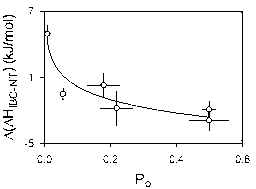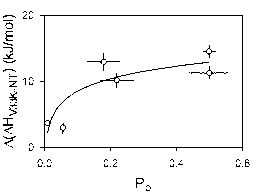Screening method for IP3 receptor target medicine based on fluorescence polarization analysis
A technology of fluorescence polarization and screening method, which is applied in the field of screening of IP3 receptor target drugs, can solve the problems of high time and cost, and achieve the effect of accurate drug efficacy and accurate prediction
- Summary
- Abstract
- Description
- Claims
- Application Information
AI Technical Summary
Problems solved by technology
Method used
Image
Examples
Embodiment 1
[0022] Example 1 FITC-IP 3 preparation and purification of
[0023] The following reactions were set to react in NMR sample tubes so as to monitor the reaction process by nuclear magnetic resonance spectroscopy. Including the following steps: 20 μmol 2-oxo-(2-aminoethyl)-IP 3 Dissolve in 0.75 ml tetradeuteromethanol, add 50 μl triethylamine, add 30 μmol FITC solid, seal, shake well, and incubate at room temperature in the dark for 4 hours; add 20 μmol FITC solid again, and continue to incubate at room temperature in the dark for 44 hours.
[0024] After the mixture obtained in the above steps is purified, the product FITC-IP is obtained 3 .
[0025]The purification step is as follows: wash the reaction system treated in step (2) into a round bottom flask with methanol, then concentrate under reduced pressure until the substance in the round bottom flask is in the form of solid powder; add 10ml of deionized Water absorbed the solids after concentration under reduced press...
Embodiment 2
[0027] Example 2 IP 3 Expression and purification of the N-terminal fragment of R1
[0028] IP of this embodiment 3 The N-terminal fragment of R1 refers to the 3 Binding domain IP 3 Receptor polypeptide fragments, there are three types of receptors used in this example, which are the N-terminal fragments located at residues 1-604 (abbreviated as NT); the IP of residues 224-604 3 Binding center (abbreviated as IBC); NT mutant (abbreviated as V33k-NT), the difference between V33k-NT and NT is only that the 33-position valine is mutated into lysine.
[0029] V33k-NT nucleotides can be prepared using the QuickChange mutagenesis kit.
[0030] The nucleotide sequence prepared by cloning is confirmed by DNA sequencing before transformation and expression. All peptides prepared include an N-terminal GST tag attached via a PreScission cleavage site. The purification of GST-tagged peptides can be performed using existing techniques, or in the manner described below in this e...
Embodiment 3
[0035] Example 3 Using FITC-IP 3 Fluorescence Polarization (FP) Experiments for Fluorescent Labels
[0036] FP measurements were performed in a temperature-controlled chamber on 96-well, half-area, black round-bottom polystyrene microplates (Greiner Bio-One, Gloucester, UK) using a Pherastar microplate reader (BMG Labtech, Aylesbury, UK) reading. In this example, an automated liquid handling system (Qiagility; QIAGEN, Crawley, West Sussex, UK) was used to automate the liquid dilution. Much of the action of adding liquid to the microplate is also automated by the system. The accuracy and repeatability (usually 5% error after 8 serial dilutions) of this automated system, which was evaluated periodically at regular intervals, was higher than that of manual pipetting.
[0037] Fluorescence polarization saturation binding assay experiment: acceptor polypeptides (containing 0.4-400 nM IP 3 binding site) with FITC-IP 3 (0.5 nM ) to a final volume of 50ul.
[0038] Fluores...
PUM
 Login to View More
Login to View More Abstract
Description
Claims
Application Information
 Login to View More
Login to View More - R&D
- Intellectual Property
- Life Sciences
- Materials
- Tech Scout
- Unparalleled Data Quality
- Higher Quality Content
- 60% Fewer Hallucinations
Browse by: Latest US Patents, China's latest patents, Technical Efficacy Thesaurus, Application Domain, Technology Topic, Popular Technical Reports.
© 2025 PatSnap. All rights reserved.Legal|Privacy policy|Modern Slavery Act Transparency Statement|Sitemap|About US| Contact US: help@patsnap.com



